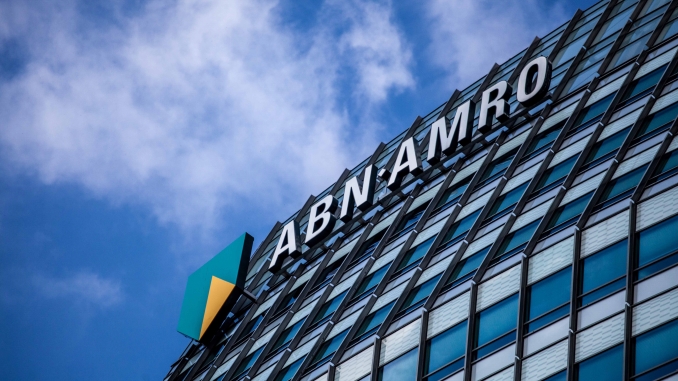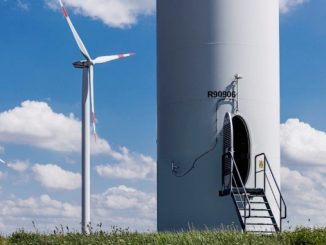
ABN AMRO lauded the hardiness of green bonds in difficult market conditions after issuing a EUR750m seven year green senior unsecured bond on Wednesday, its biggest green bond to date. The Dutch bank has added new project types to its framework, with the new issue partly funding offshore wind.
ABN AMRO’s deal was sold into an unpredictable wider market this week, with deals in some FIG markets finding only limited demand against a volatile backdrop and amid increased investor selectiveness.
Thijs van der Ven, director, debt syndicate, at ABN Amro, said the green element of the deal helped ensure its success in the difficult environment.
“It was most definitely far better to be issuing a green bond yesterday than a conventional one,” he said. “It almost feels like a product in between a conventional senior and a covered bond, because there’s a lot less aggressiveness towards issuing a green senior than a conventional senior.”
Joop Hessels, head of green, social and sustainability bonds at ABN AMRO (pictured), added that the bank’s previous green bond issuance had fared well at a time when concerns over Greece were causing volatility in the market.
“The green bond has proven to be a very good product to issue in these moments,” he said.
 Van der Ven noted that ABN AMRO had not issued any OpCo senior bond since its last green deal, and that OpCo senior supply from core names has recently been limited, meaning demand was also strong from non-green accounts able to invest in such paper.
Van der Ven noted that ABN AMRO had not issued any OpCo senior bond since its last green deal, and that OpCo senior supply from core names has recently been limited, meaning demand was also strong from non-green accounts able to invest in such paper.
Leads ABN AMRO, BayernLB, DZ and SEB launched the seven year senior unsecured benchmark with initial price thoughts of the mid-swaps plus 35bp area on Wednesday morning. The size was then fixed at EUR750m and guidance set at the 30bp area with books over EUR1.1bn, before the spread was fixed at 28bp with books in excess of EUR1.25bn, pre-reconciliation.
The deal followed a two-day European roadshow on Monday and Tuesday, which visited several Dutch cities and Paris.
“It went very well,” said Hessels. “It is a very strong order book, not only in size but also in the distribution of investors.”
The final book stood at EUR1.25bn, with around 100 accounts.
Fund managers were allocated 58%, insurance companies and pension funds 23%, banks and private banks 10%, and central banks and official institutions 9%. Accounts from Germany, Austria and Switzerland took 33%, the Netherlands 22%, France 22%, the UK and Ireland 10%, the Nordics 8%, southern Europe 4%, and others 2%.
“Dark green” accounts were allocated 60% of the deal, “light green” 20% and mainstream accounts 20%, according to the leads.
Syndicate bankers at the leads said that at least 10% of the total investors participating were green investors that had not invested in ABN AMRO’s previous green issuance.
“Investors are looking for ways to realise green investments,” said Danielle Boerendans in ABN AMRO’s treasury. “This bond’s structure comprises all green safeguards currently considered relevant by the market.”
Van der Ven noted that ABN AMRO’s senior curve is particularly flat, with its green 2022s seen at 14bp, bid, and its conventional 2025s seen at 18bp.
“For three years’ maturity extension and with the new issue premium added onto that, printing this 14bp back of the 2022s is definitely a strong outcome,” said Van der Ven. “We could have printed this a bit tighter, but this was a sensible decision by the issuer to ensure a healthy trade.”
Bankers away from the leads said the deal offered a premium of around 8bp-10bp, which they said represented a good price in the prevailing market conditions.
“You might not see a substantial green benefit on the curve, but I do see a green benefit in execution,” said one.
ABN AMRO has updated its green bond framework since its last deal, adding renewable energy and circular economy projects to those that are eligible to be financed, alongside energy efficient building loans.
The proceeds of the new issue will be 77% directed to energy efficient residential mortgages and 23% to offshore wind.
The deal is the first green bond issued that is certified under the Climate Bond Initiative’s Marine Renewable Energy Criteria.
“This time, we decided to include offshore wind as one of the new categories,” said Hessels.
The new issue will also be used to finance only mortgages originated after 1 January 2015, Hessels said, adding that investors like to see more recent projects being financed.
Main photo: Diesmer Ponstein/Flickr



